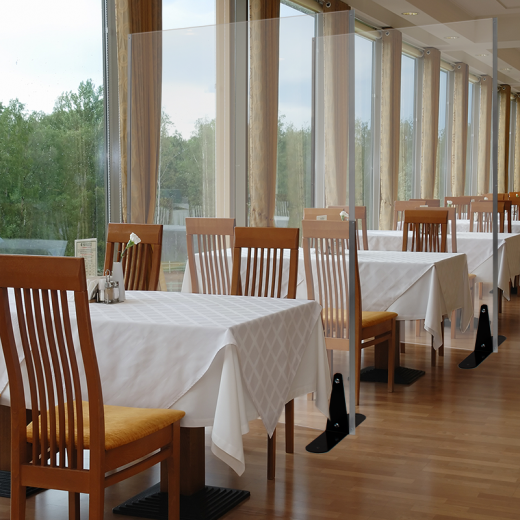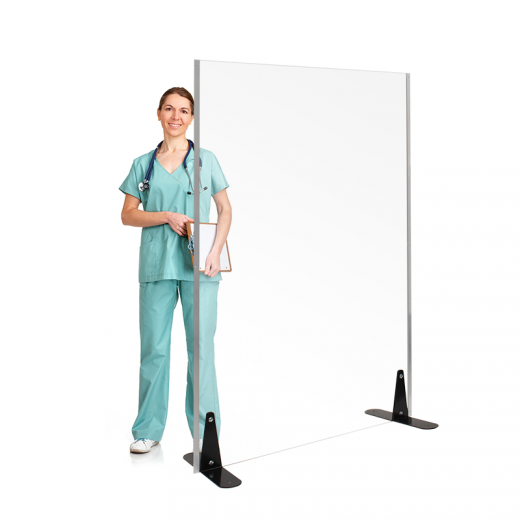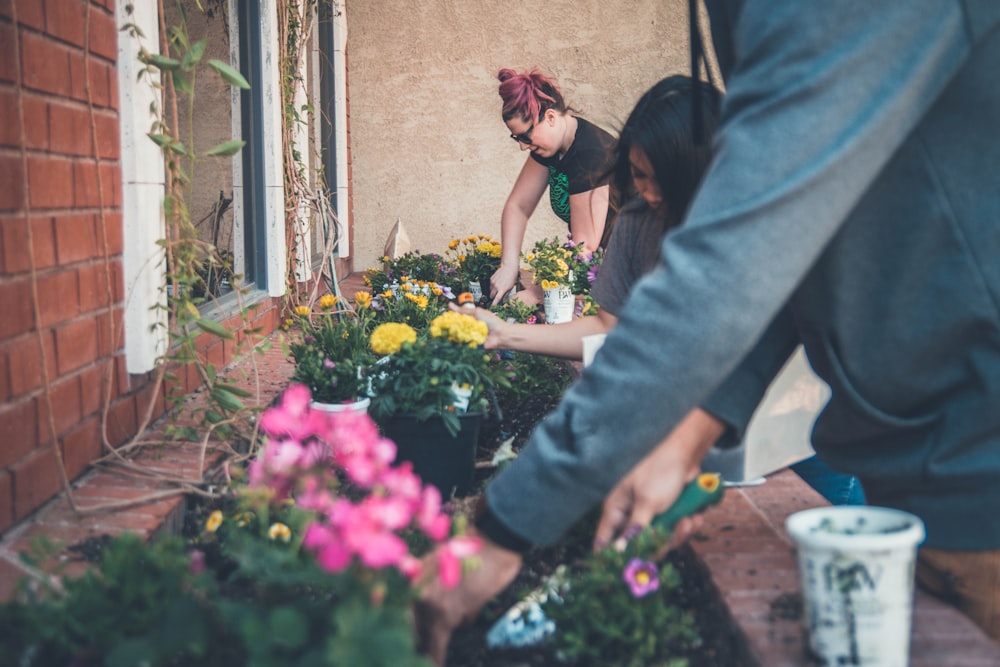As we edge near a post-pandemic reality, it has become clear that a lot of industries have taken cues from their patrons regarding what has worked and what has not in a world where we try to gather while also remaining 6 feet apart. One of the leading industries to feel such implications from the ever changing normal of consumer relationships is restaurants and the food service sector as whole. Let’s face it—people are just not as comfortable sharing public spaces as they used to be, which has prompted a learning curve for everyone who owns or works at a restaurant. Although the impacts of a pandemic initially felt negative for dining establishments as they found themselves experiencing staff shortages and supply chain issues, staff members, owners, and managers quickly figured out clever workarounds in such challenging times. Some of these clever alternatives became trends amongst the industry that may have paved the path to forever changing the way consumers dine, while redefining the new restaurant norm. In this blog post we will explore these changes and 5 leading trends that we will see in 2022 and how it will affect your experience of ordering food in or going out to eat.
1. Contactless Ordering and Delivery
At times it feels like we have never really departed from 2020 and all its anxieties. Although we now have vaccines for COVID-19, we’re also dealing with the unpredictable outcomes of new variants, which has many people still feeling uneasy about going out and socializing as per usual. It’s difficult to have a carefree attitude when there is so much to care about. Therefore, contactless ordering and delivery have been the method many restaurants, cafes, and other eateries have been sustaining business. Often when patrons dine-in, dining establishments will have indoor dining dividers, restaurant sneeze guards in place in checkout areas, between booths, and in high traffic environments such as bar spaces. These restaurant sneeze guards are put in place to make staff members feel safe as well as patrons who need a break from day-to-day stressors.

Food display cases and food display stands have also been installed in some of the more casual eateries to separate fresh-baked goods and ensure premium protection over the products, lending confidence for consumers to purchase.
Staying home all the time, as we have learned, is safe but doesn’t always offer the break we need. That’s why placing the appropriate barriers in the right areas makes it a lot more comfortable for people to be out in the world with lessened exposure to everyday germs. On the flipside, on the days that we do need to stay home, contactless delivery has become a popular alternative. As mentioned, many food establishments pivoted to adopt an online application that allows people to place an order for door delivery or curbside pickup as well as the option to leave a digital tip, there is no face-to-face exposure, and everyone stays safe from the possible exchange of germs. Whether we are dealing with COVID-19, any other seasonal flu, or simply can’t get out, this convenient service is here to stay!
2. Menu Prices Continue to Rise While Menus Become Smaller
Unfortunately, the pandemic has put a halt on a lot of supply chain needs, and as a result restaurants are forced to focus on quality over quantity. While the pandemic will not last forever, this way of thinking can ultimately be a smart economic change. As food costs begin to rise, we will see people dining out with intention and not as frequently, as it will be more about the experience. Based on this new, hard truth, menus will also become noticeably narrower, as restaurants will be homing in on ways to stay profitable while also giving their patrons a desirable experience. According to restaurauntbuisnessonline.com, “Some restaurants are reconsidering the menu mix and how to optimize selection to boost razor-thin margins. Others are scrapping their shared-plates models and reimagining the future of catering.” Essentially, restaurants will not be investing in more than they need to keep their lights on for the foreseeable future. Less options will ultimately mean less waste.
3. Labor Shortage Managed Through Technology
Through the pandemic thousands of restaurants globally lost their staff due to closures, anxieties, loss of consumers, and illness. Moving forward, we still are living in a world where there are economic repercussions to what has happened over the last two years with COVID-19. As we make our way out of the pandemic, business owners are doing everything they can to ensure a safe environment with the installation of post-pandemic barriers and restaurant sneeze guards to ensure both their staff and consumers are safe in the future. However, aside from health concerns, the financial implications that have hurt a lot of households throughout the pandemic has resulted in many people are not dining out as often. Due to the scale back of revenue for restaurants, cafes, and eateries alike, they have no choice but to automate their back kitchen tasks to ensure they can keep afloat even with less help. According to squareup.com, “Many restaurateurs are investing in digital technology to improve back-of-house processes, and 36% of owners and managers have upgraded their business technology. Streamlined kitchens can mean better efficiency across channels, giving managers and owners the confidence and freedom to test out new restaurant concepts.”
4. Community First
The COVID-19 pandemic proved to be a particularly testing time to many small business owners. Many loyal patrons and consumers in their neighborhoods went to great lengths to ensure to shop for necessities or to eat local within their community versus supporting larger commercial counterparts. With a sudden strength in a community-focused frame of mind, smaller restaurants and town-specific eateries are starting to play a larger part within their towns. Many restaurants have made a valiant effort to engage with the people who have supported them in such trying times. These same restaurateurs are also taking advantage of all the precautionary measures they have implemented within their spaces. Makeshift outdoor dining options became mandatory for indoor dining food venues. This newfound revenue stream is being adopted by many businesses. Restaurateurs, catering halls, outdoor event spaces can now safely host charity events, banquets, or church fundraisers at their establishments because of the indoor dining dividers, restaurant sneeze guards and plastic shields that have been installed in the appropriate areas—allowing people to come in and feel safe and secure, all while the restaurants can earn local brand recognition and loyalty. A win-win for all.
5. Investing in a Great Work Environment
Ultimately as we have adjusted to a new normal, industries everywhere have had a more humane touch. From keeping their workers safer, to caring about the overall wellness of their patrons and consumers, we are living in a time where people are putting other people first.
Therefore, restaurants and dining spaces everywhere are investing in design options to make their staff feel comfortable within their work environments. By creating a safer atmosphere for people in need of work, restaurant owners are hoping to regain a healthier business by focusing on personnel retention through safety protocols. Many establishments have taken precautionary measures to make their quarters extra safe such as putting restaurant sneeze guards, between tables, booths, and common areas, and keeping baked goods inside of protective acrylic food display cases and food display stands to add another layer of protection from everyday germs. Many establishments are still mandating that masks be worn by workers to be respectful of everyone’s space and overall health.

Restaurant owners are also looking to offer more perks to their staff in uncertain times, by providing more benefits like PTO time with their family and focusing on behavioral health and overall well-being. For restaurateurs who provide a safe environment and engage in a more compassionate approach, they may change the new normal into a greater normal.
Conclusion
A clear path for the restaurant industry to prevail is the ability to pivot and adapt within the confines of restrictions and regulations. According to sqaureup.com, “You can adapt these top restaurant trends in your business. First, take stock of your current challenges and consider the trends that could deliver the most benefit to the people you serve. For example, embracing digital technology could help you run your restaurant more efficiently and stay relevant in a digital future. An efficient tech-driven restaurant that is in touch with the community could be the future of the restaurant industry in 2022.”
If you are interested in learning about more ways to safeguard your restaurant with acrylic products like restaurant sneeze guards, barriers, plexiglass shields, or food display cases, reach out to contact our group of experts at shopPOPdisplays to learn more about how to enhance your restaurant, catering, or food space.





